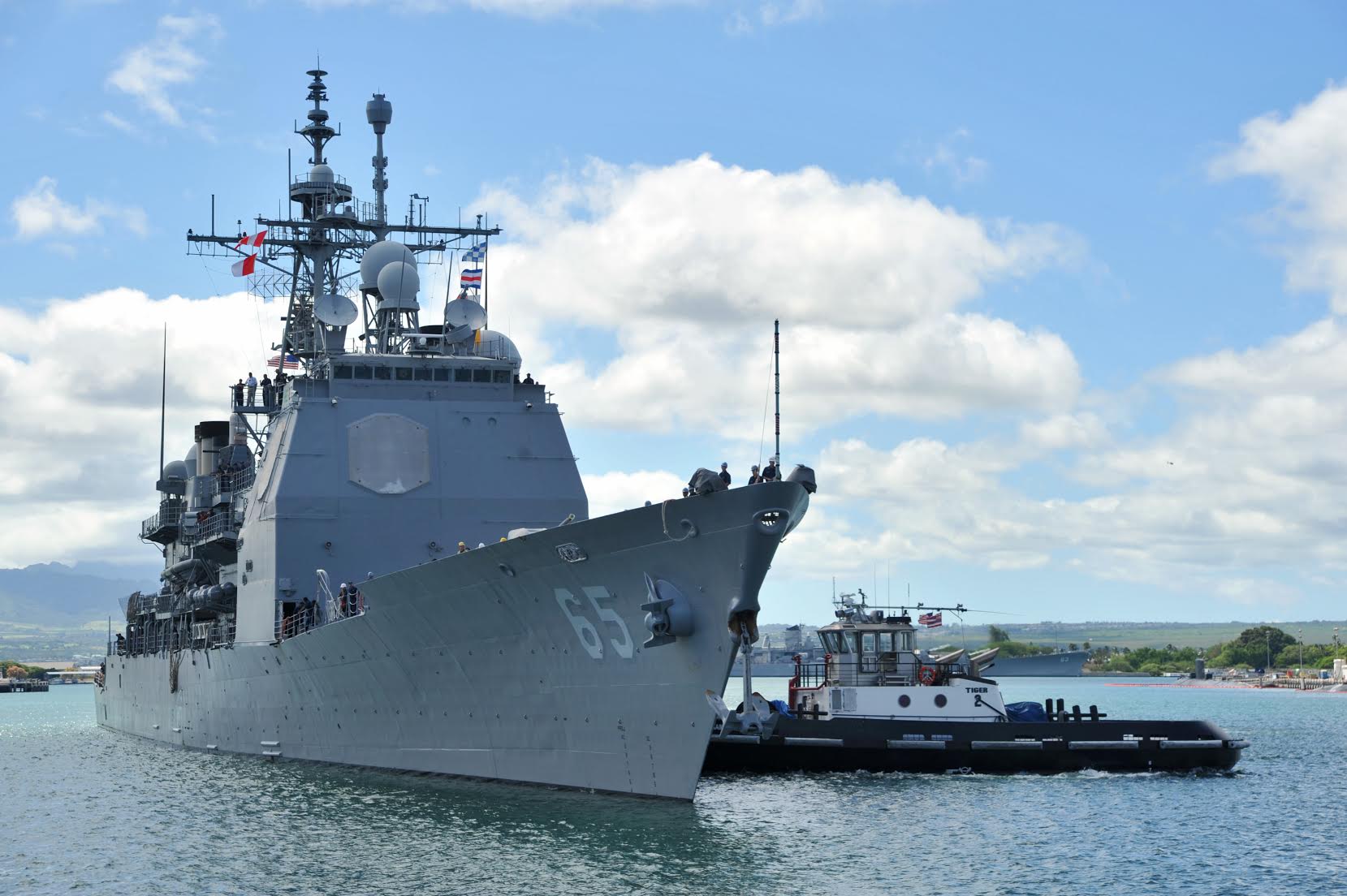
A previous version of this post incorrectly outlined the Navy’s Two-Four-Six phased modernization plan as part of its Fiscal Year 2016 budget submission to Congress. The text has been corrected.
PENTAGON – The Navy has again submitted a controversial plan to layup some of its Ticonderoga-class cruisers as part of a modernization plan it says will preserve the air warfare capability of U.S. carrier strike groups into the 2040s as part of the service’s Fiscal Year 2016 budget submission to Congress.
Under a so-called Two-Four-Six phased modernization plan, two cruisers would enter in a modernization cycle each year, no cruisers will remain in layup for more than four years with no more than six cruisers out of service at one time, said Rear Adm. William Lescher, the Department of the Navy’s (DoN) deputy assistant secretary of the Navy for budget in a late afternoon briefing to reporters.
“Last year [in the budget] request, the department had proposed to put into a long-term phased modernization 11 [out of 22] of the cruisers,” Lescher said.
“That led to a conversation with the Congress about the trade-off of savings achieved by that approach versus capacity and near-term risk.”
Lescher characterized the move as following the direction Congress approved in both Fiscal Year 2015 appropriations and authorizations bills approved as part of the overarching omnibus bill signed into law in December.
Congress allowed the Navy to move ahead with the first two ships in the estimated $350 million per hull effort – USS Cowpens (CG-63) and USS Gettysburg (CG-64). The Navy’s FY 2016 budget funds the modernization for USS Vicksburg (CG-69) and USS Chosin (CG-65).
“They can stand down two this year but [the bill] doesn’t address what they do in future years,” a legislative staffer told reporters in November.
The Navy plans to upgrade the ship’s hull, mechanical and engineering spaces, improve some aspects of the crew’s quarters, upgrade the cruisers to operate in the Navy’s Naval Integrated Fire Control-Counter Air (NIFC-CA) concept and field Raytheon’s Standard Missile (SM) 6.
“Using that approach, the Navy would be able to maintain at least 11 operationally active cruisers (1 for each of the Navy’s planned 11 carrier strike groups) through 2034, with the last cruiser retiring in 2044,” read a description of the plan by the Congressional Budget Office (CBO).
The Navy says it desperately needs to cruisers for their ability to field an air defense commander for embarked carrier strike groups – a capability that was to be included in a proposed Flight IV Arleigh Burke guided missile destroyer. However the plan for the Flight IV was shelved due to the looming cost of the Ohio-class Replacement ballistic missile submarine.
The Navy’s plan met stiff opposition in Congress from members who felt the service would not reactivate the cruisers once they entered the layup portion of the modernization.





